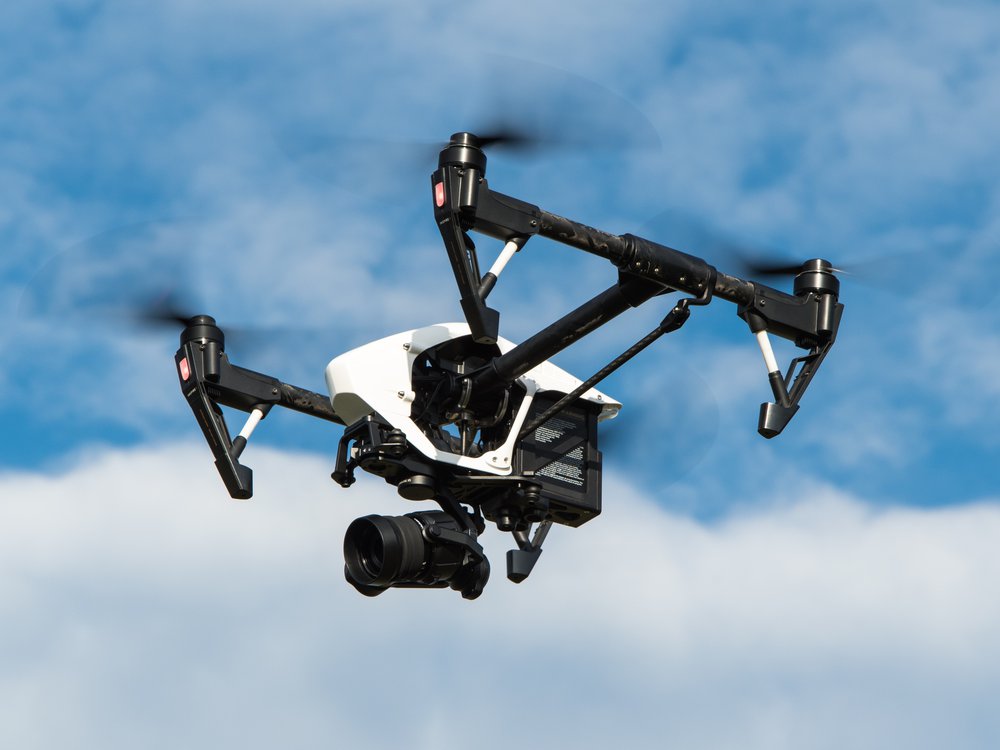
Drones, paired with 3-D printing technology, could autonomously carry out building projects.
Thomas Ehrhardt via Pixabay
Future construction sites could look vastly different due to new, flying 3-D printing technology. As opposed to plots of land packed with workers in neon-colored vests and goggles, these developments might one day be loaded with drones that are 3-D printing new buildings.
A group of engineers from across the globe have designed a team of flying robots with the ability to create structures while hovering in the air. These drones open up the possibility for construction projects to exist in areas that would otherwise be out of reach, according to research published Wednesday in Nature.
Inspired by insects like bees and wasps that utilize collective construction techniques, the research team employed a first-of-its-kind swarm of 3-D-printing drones that navigate on their own and deposit construction materials.
“We’ve proved the concept that drones can work autonomously and in tandem to construct and repair buildings, at least in the lab,” Mirko Kovac, head of the materials and technology center of robotics at Swiss research institute Empa and co-leader of the research, says in a statement. “This scalable solution could help construction and repair in difficult-to-reach areas, like tall buildings.”
3-D printing, also known as additive manufacturing, is already used to enhance the efficiency and safety of some construction projects, according to the research. However, the large size of current 3-D printing technology as well as the fact that this equipment is typically connected to a stationary power supply limits these machines’ ability to build in hostile environments that may be difficult to access.
To bypass these limitations, the proposed technology uses two types of aerial drones that work together. The “BuilDrone” utilizes a depositing nozzle to unload physical building materials and the “ScanDrone” observes and analyzes its counterpart’s depositing operations.
“These solutions can actually be very cost-effective, efficient and provide a whole new way of working that otherwise is quite prohibitive using normal techniques,” Vijay Pawar, a study co-author and computer science researcher at University College London in England, told The Daily Beast’s Maddie Bender.
Within the study, researchers illustrated proof of concept through the drones’ ability to work together to construct cylinders made from insulation foam and cement-like materials. The first of these towers stood nearly seven feet tall, and the second measured just seven inches, per New Scientist’s Jeremy Hsu. The team’s simulations highlighted the possibility of building larger, more holistic structures with the use of up to 15 robots.
As this technology continues to develop, the researchers hope it will unlock construction abilities in isolated areas or emergency situations. The aerial drones could help build housing and infrastructure where “unprecedented increases in the frequency of natural disasters and the hostility of climatic conditions render existing approaches to building challenging,” the authors write.
Down the line, the drones could 3-D print temporary homes for displaced people or make repairs to infrastructure during a blackout, reports The Daily Beast. In a distant future, the researchers envision their robots buzzing around Mars, per the statement.
Rahul Pranat, a mechanical engineering researcher at Carnegie Mellon University not involved with the study, tells The Daily Beast that the research speaks to developments in 3-D printing and robotics technologies. “[Aerial robots] would remove roadblocks to many applications of 3-D printing and go beyond the limits of current technologies,” he says to the publication.
Still, Pranat adds that the manufacturing and robotics technology needs improvement before a group of drones can realistically be used in full-scale construction projects.
Researchers will continue trials of the technology before it will be available to be contracted for large-scale construction.
With the help of these drones that have the power to make choices throughout the building process, future architects will have the opportunity to alter building designs in the middle of construction and adapt their projects to complex environments, says study co-leader Robert Stuart-Smith, a 3-D printing researcher at the University of Pennsylvania and University College London in England, to The Daily Beast.
“We’ve demonstrated the first-ever robots that are 3-D printing in-flight, and it’s a pretty amazing achievement,” he tells the publication.
Recommended Videos
 Unmanned Aerial Vehicle The latest drone news
Unmanned Aerial Vehicle The latest drone news



